Kothmire
| Archduchy of Kothmire | |
|---|---|
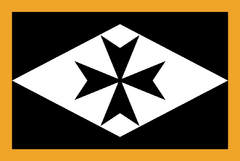
| |
| Capital | Kothmire |
| Culture | Kothmirian |
| Location | South Cinder |
| Government | Theocratic Monarchy |
| Leader | Manifestus |
| Religion | Church of Moonrise Dark Creed |
| Legislature | Creed of the Dark Gods |
| Date of Founding (IRL) | Oct 3, 2023 |
The Archduchy of Kothmire, also known as Kothmire, was a theocratic monarchy located in Southern Cinder. It was bordered by Danouvia until its collapse, after which it was bordered by Korsia to the East and Parakascëa to the North. At the time of its collapse, Kothmire was bordered by the Lendisti Tribe to the West and Sanea. Kothmire was geographically centered within the southern swamps, which defined its natural borders.
Little is known about the history of Kothmire, although records indicate that its history stretches far into ancient history. An isolated region, Kothmire was regarded in legend as a particularly bleak region due to its poor weather and treacherous reputation. Kothmire's early settlers are theorized to be of Northern heritage, possibly refugees of historical persecution which would solidify into a major part of Kothmirian identity. Kothmire would succeed due to the swamp's unexpected fertility, allowing the Kingdom to prosper for a time and construct various major landmarks within the region.
Kothmire's main focuses as a nation were spent developing architecture, masonry, and the development of theology. The most well-known product of these efforts is the House of Night, also known as the Kothmire Cathedral. Other major structures constructed by Kothmire include the Idol of Selûne, and the Idol of the Moonslayer. Many of these structures would be built in the initial Kothmirian age of prosperity, which would come to an end following the Port Dry Crisis, which would escalate into the First Kothmirian War. Kothmire's eventual destruction would come following the Second Kothmirian War, also known as the Moonrisen Crusade.
History
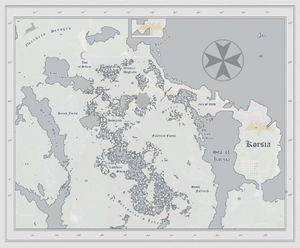
Settlement
The Archduchy of Kothmire was officially established sometime between September 28 2023 and October 3, 2023. Initially a minor settlement, the region would first appear on a Danouvian map, after which it would be recognized by most states within Cinder. It would importantly establish a treaty of joint control over the coastal region of Dry Port. Early focuses were on transforming the region into an area suitable for agriculture.
Early Development
The development of Kothmire would begin with the establishment of the capital city following major agricultural advancements in the region. Using the swamp's natural fertility, the area allowed for extremely high yields of wheat and other grains. This success would allow Kothmire to develop rapidly, with construction on the Kothmire Cathedral beginning soon after the nation's founding. Additionally, Kothmire would also invest in the creation of Dry Port, which would be established through the Kothmire-Danouvian Joint Control treaty.
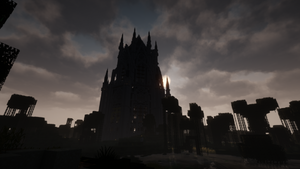
Initial Prosperity
This period would see the creation of various farms, the creation of gray-sheep livestock, large underground quarrying of stone for various masonry projects, and the construction of additional houses. This would be greatly enhanced by various foreign artifacts that would be collected throughout the nation's development, including the variety of high-quality pickaxes and Tintorinian boots. During this time, Kothmirian explorers would make several expeditions to the North in search of parrots, exploring the Northern jungle and the Temple of Alkabazaria.
Conversion to Selûne
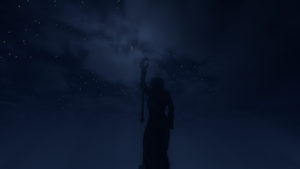
During this early stage in Kothmirian development, the Archduchy would become fascinated with the Church of Moonrise. This was partly due to the theorized Northern heritage of Kothmire's population, as well as the cultural association of Kothmire's traditionally long and dark nights with spiritualism and faith.
Adoption of the Moonrisen Church
Kothmire would officialize this interest by inviting the High Priestess of the Moonrise church, Ashelya of Selûne, to formally request acceptance into the Moonrisen faith. To accomplish this, the Kothmirian Manson's league was used to create a minor statue of Selûne to impress the priestess. This effort succeeded, and following an initiation ceremony, Kothmire officially became a Selûnite state on Dec 28th, 2023.
This would be solidified by the construction of the Idol of Selûne on January 5th, 2024, which would cement Kothmire's reputation as zealots of Selûne.
Port Dry Crisis
Kothmire's era of uninterrupted development would come to an end following growing tension with Kothmire's younger neighbor, the growing Empire of Messenia. Created out of the ex-Danouvian state of Korisa and the Despotate of Parakascëa, the Messenian Empire's sudden growth and expansion was perceived as a threat to Kothmire's quiet development. Despite this, relations with the Messenians remained cordial. Following the collapse of Danouvia, the Kothmire-Danouvian port agreement would be renewed with Korisa, and passed on to Messenia, which the Messenians would respect. Relations would collapse however following Messenia's invasion and subsequent capitulation of Mustyria, which sparked a diplomatic condemnation from Kothmire. In response, Messenia would seize Port Dry and declare Kothmire an enemy of the Messenian Empire. Kothmire would respond with further condemnations, which would be supported by the Church of Moonrise. Following this, Messenia would begin the construction of a 2-block high iron fence within the then-disputed border, which would block off Kothmire from the main road used for travel within central Cinder. This provocation would lead to Kothmire vandalizing the Fence, creating several holes in which travel could continue despite the Messenian blockade.
False Flag
Tensions would once again escalate following the eruption of the Thundran crisis, in which Kothmire and Messenia would support opposing sides. Following this, Messenia would launch a false flag attack on Kothmire, claiming that Nykol Haartmann, a Messenian minister, had been assassinated by DJ Dry, a Kothmirian citizen, on the main capital road. Despite the denial of this crime by the Kothmirian government, with various pieces of evidence, as well as a plea for an international investigation, the Messenian government would respond to this by conducting a revenge murder of Manifestus. This would be followed by a declaration of war against Kothmire, beginning the First Kothmirian War.
Messenian Invasion
Messenia would begin the First Kothmirian War on Feb 11, 2024. Kothmire would respond by making an international address for sympathy, which would go widely ignored, save for the Moonrise Church. The Moonrise Church would publicly announce their support for Kothmire, as well as condemn the Messenian aggressors for their invasion.
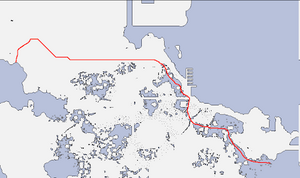
The first casualties of the war would come from a Messenian ambush of Northern supplies, who attempted to give Kothmire weapons and armor to fight the Messenians. This would result in public condemnation and the establishment of new supply routes to Kothmire through unexplored Western routes.
Stalemate
Despite initial eagerness for the war, logistical issues and exhaustion from other conflicts would lead to a growing slog in which neither side was interested. This failure would lead to a status-quo peace agreement, with the signing of the Treaty of Ataetia in return for a Non-Aggression Pact and free travel through both nations, at the cost of conceding Dry Port.
Post-Invasion Isolationism
Following the end of the Messenian invasion, Kothmire would retract its diplomatic ties with most nations and recede into isolationism. This period would be marked by a national feeling of melancholy, created by the humiliating quasi-defeat at the hands of the Messenians and the increasing cultural and diplomatic loneliness. This would eventually escalate to anger, directed toward the Church of Moonrise, due to their failure to prevent the Messenians from attacking Kothmire. These beliefs would specifically build resentment toward the Selûnite faith, who was seen as the patron god of Kothmire and thus its defender.
Submission to the Dark Gods

During this period, Archduke Manifestus would have an apparent visions and episodes of a malevolent nature. While initially showing resistance, Manifestus grew to see the various voices and sights he would hear as a liberating and cathartic force. This would lead to an apparent revelation on the existence of numerous "dark powers," which were the apparent true gods of the mortal realm. Immediately after this discovery, Manifestus would go on to convert other citizens of Kothmire to the growing faith, before eradicating Selunite imagery across Kothmire. This including the defacing of the Idol of Selune, as well as other statues dedicated to her likeness. Following this, Manifestus would begin authoring the apparent direct word of the Dark Lords in effort to create a scripture by which to apply as law within Kothmire.
Formation of the Dark Creed
The Dark Creed would officially be created on March 20th, 2024, following the publication of the book of the same name. The formation of the Creed would see a wide variety of reactions, the vast majority of which were negative. This was due to the Creed's policy on anti-religious tolerance, which, compounded by the fact that many faiths saw the Creed's teachings as an anathema to their own faiths, lead to the Creed very quickly becoming an international pariah.